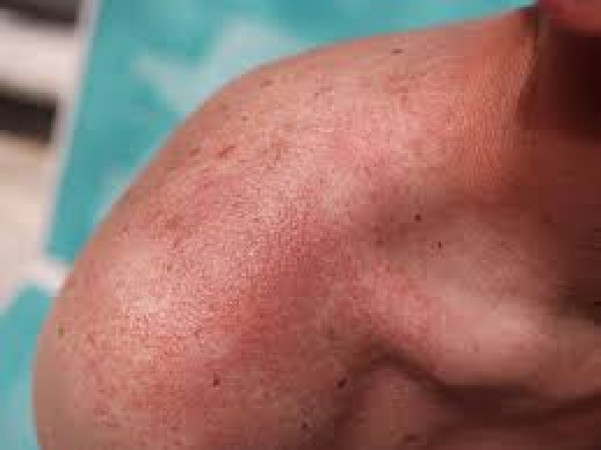
Heat infections can manifest through various symptoms, indicating the body's struggle to regulate temperature and cope with excessive heat. Understanding these signs can help in timely intervention and prevention of severe complications.
1. Heat Rash
Heat rash, also known as prickly heat, presents as small red bumps or blisters on the skin. It occurs when sweat ducts become blocked, leading to irritation and discomfort.
2. Heat Exhaustion
Heat exhaustion is characterized by heavy sweating, weakness, dizziness, nausea, headache, and fainting. It typically results from prolonged exposure to high temperatures and inadequate hydration.
3. Heat Cramps
Heat cramps involve painful muscle contractions, often occurring in the abdomen, arms, or legs. Dehydration and electrolyte imbalances contribute to this condition, especially during strenuous activity in hot weather.
4. Heat Syncope
Heat syncope refers to fainting or lightheadedness due to heat exposure. It commonly occurs when transitioning from a seated or lying position to standing in hot environments, leading to decreased blood flow to the brain.
5. Heat Stroke
Heat stroke is a severe condition marked by a body temperature of 104°F (40°C) or higher. Symptoms include confusion, rapid pulse, throbbing headache, nausea, and unconsciousness. Heat stroke requires immediate medical attention as it can be life-threatening.
Ways to Avoid Heat Infection
Preventing heat-related illnesses involves adopting various strategies to stay cool and hydrated, especially during hot weather or engaging in physical activities outdoors.
1. Stay Hydrated
Drink plenty of fluids, especially water, throughout the day to replace lost fluids from sweating. Avoid sugary or alcoholic beverages, as they can contribute to dehydration.
2. Dress Appropriately
Wear lightweight, loose-fitting clothing made of breathable fabrics such as cotton to promote air circulation and prevent overheating. Protect your skin from sunburn by wearing a hat and applying sunscreen.
3. Stay Indoors During Peak Heat Hours
Limit outdoor activities, particularly during the hottest parts of the day, typically between 10 a.m. and 4 p.m. If you must be outside, seek shade and take frequent breaks in a cool environment.
4. Use Cooling Measures
Take cool showers or baths to lower body temperature, and use fans or air conditioning to maintain a comfortable indoor environment. Apply cold compresses to the skin to alleviate heat-related discomfort.
5. Pace Yourself
Avoid overexertion, especially in high temperatures, by gradually increasing physical activity levels and taking regular rest breaks. Listen to your body's signals and stop activity if you experience symptoms of heat exhaustion or dehydration.
6. Monitor Vulnerable Individuals
Keep a close eye on children, older adults, and individuals with chronic medical conditions who are more susceptible to heat-related illnesses. Ensure they stay hydrated and cool, and seek medical help if needed. By recognizing the symptoms of heat infection and adopting preventive measures, individuals can safeguard their health and well-being during hot weather conditions. Prioritizing hydration, staying cool, and avoiding prolonged exposure to extreme heat are crucial steps in reducing the risk of heat-related illnesses.
How Eating Right Can Ward Off Disease and Slow Aging
Know This Skincare Routine That Erases Years in Just One Week
Be Positive: How a Positive Mindset Can Transform Your Health